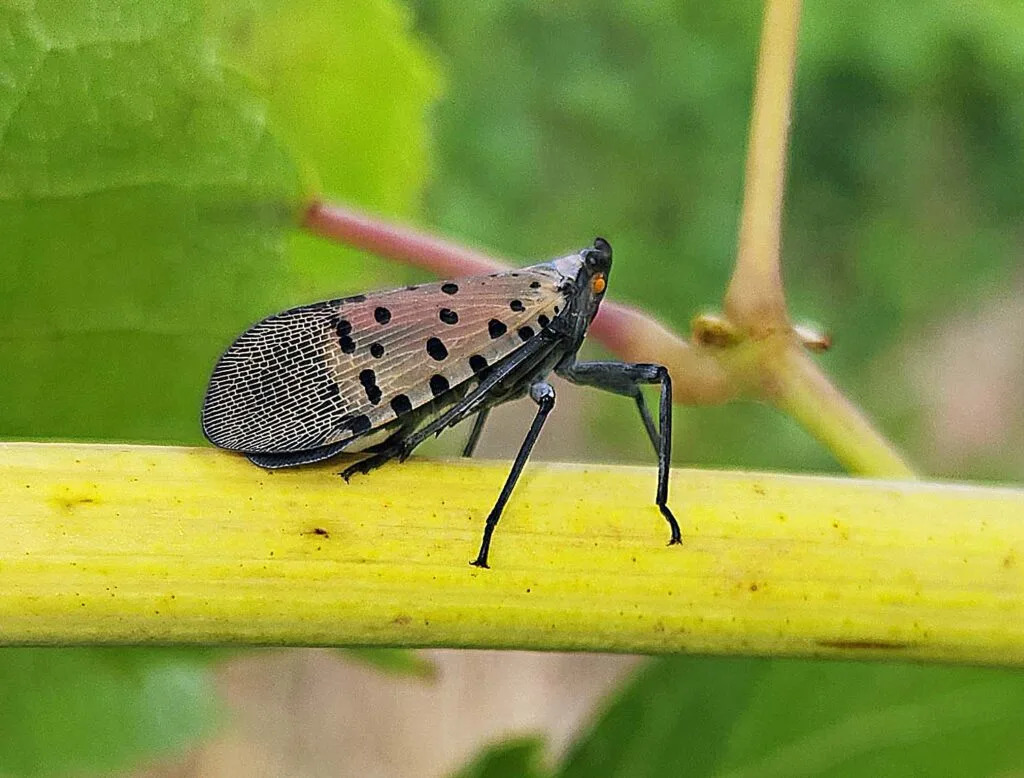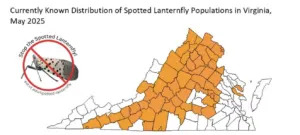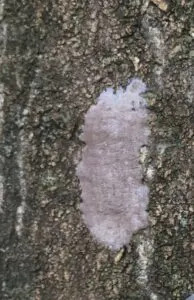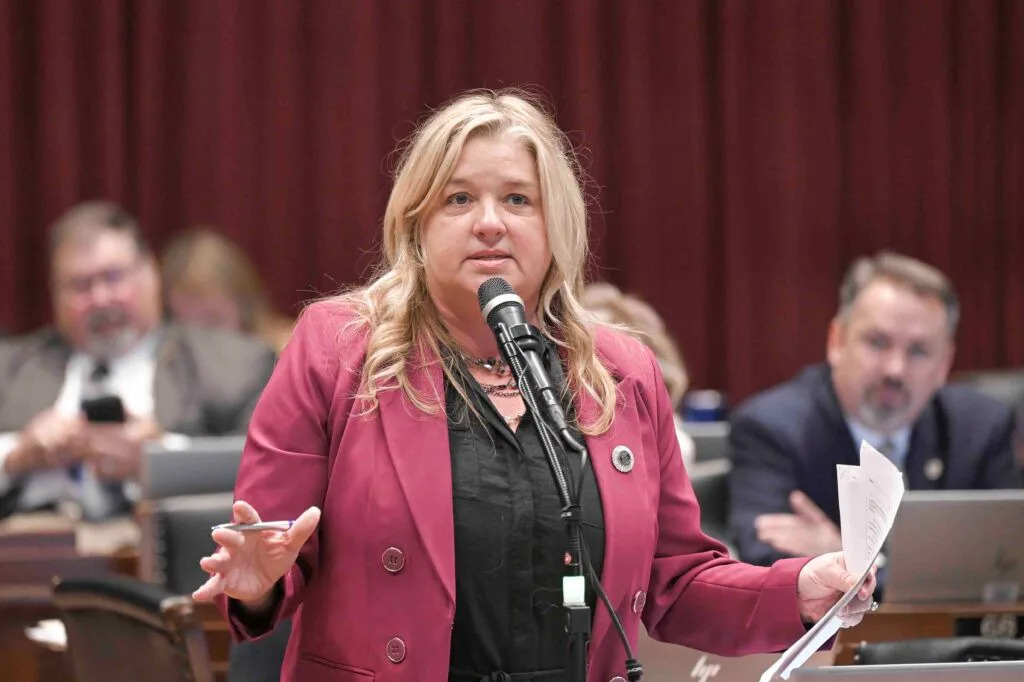
Spotted lanternfly adult (Photo courtesy Doug Pfeiffer/Virginia Tech)
The invasive red-and-white spotted lanternfly has now spread to more than half of Virginia’s counties and cities, after years of creeping along the state’s major transportation corridors. Officials are ramping up research to determine how to best target the pests and provide vineyards with clear guidelines on when to spray pesticides.
The brightly colored insects can now be seen lazily flapping through much of the Piedmont and Shenandoah Valley. Hitchhikers from Asia, they first arrived in Virginia in 2018.
Today, they are most commonly found near railways and other transportation routes. The state once tried quarantining infested counties and inspecting shipments for eggs to stop the spread, but as the flies became more pervasive those measures were repealed in March of this year.

While not as devastating as some invasive insects, lanternflies feed on a wide range of plants. They are most devastating to grapevines and to the invasive tree of heaven plant. The pests have also shown to weaken some maple and black walnut trees, potentially leaving them vulnerable to further infestation.
“The term that we typically use in invasive species biology is cascading effects to refer to the idea that there are effects out in the ecosystem that we may not yet be aware of because the spotted lanternfly is so new, the research is so new. It’s still establishing in most places, but it has not reached its peak yet,” said Jules Amanita, the spotted lanternfly field supervisor at the Virginia Department of Agriculture.
Virginia’s $8 billion wine industry has been closely monitoring the presence of spotted lanternflies in vineyards. Doug Pfeiffer, a professor of Entomology at Virginia Tech, said that there is a proposal for the USDA to approve data-based guidelines of when growers should spray for the pests. But, he added, those efforts are on hold due to ongoing funding disputes in Washington, D.C.
“In fact, sometimes they were a little too prepared, because I didn’t want them to spray the whole vineyard at the first sight of an individual insect. But they were so concerned with it,” Pfeiffer said. ”The problem is we don’t have a firm action threshold established.”
The spraying of pesticides also affects other insects, including those that prey on lanternflies or control other insects. Since the flies have no natural predators in the U.S., populations can quickly grow unchecked.
“Insecticides will cause secondary past outbreaks. If they kill natural enemies, at least a pest that is being controlled naturally from their controls, and then they rise to pest status,” Pfeiffer said. “So that could be a problem on most crops. It’s especially problematic in vineyards, because one of the pests that can be induced to outbreak status are mealybugs, and they serve as the vectors or carriers of some grapevine viruses.”
Pfeiffer said he has not heard many reports of vine loss due to lanternflies, since vineyards have been preparing for years. Still, the cost of spraying, along with the risk of triggering new pest problems, weigh heavily on growers.
Lanternflies frequently feed on the invasive tree of heaven, a plant introduced to the U.S. centuries ago. After feeding, the flies develop a bitter taste that makes birds less likely to eat them, Pfeiffer explained.

“They can develop without the tree of heaven, but with a much lower success rate … So if we eliminate the tree of heaven, not only do they have more trouble developing, but once they reach adults, they could be better prey for birds,” Pfeiffer said.
Efforts are underway to reduce tree of heaven populations as part of controlling lanternflies. Researchers are also exploring the release of potential predators to combat the insects, though these species remain under quarantine.
Other states have turned to public campaigns encouraging residents to squash lanternflies on sight. While killing them won’t eradicate the pest, it can help slow their spread.
“If a spotted lanternfly is showing up somewhere that a member of the public is seeing it, it is far more likely to have that individual hitchhike with that person or somebody else and end up somewhere new,” Amanita said. “So even killing just one — if you’re killing it in a populated area — can make a significant difference. Additionally, crushing egg masses is a great thing that everybody can do.”

The flies lay their eggs in mid-September, a period that gives researchers insight into the size of each year’s generation. Pfeiffer said climate change could alter how long lanternflies feed on vulnerable grapevines and other plants.
“I think the impact will be that if the egg laying happens earlier and there’s signs that it is, then they may reach adult stage earlier and prolong the adult period when they’re doing their most severe feeding and egg laying,” Pfeiffer said.
Due to the spread of the flies, the Virginia Department of Agriculture is not able to provide treatments for individuals outside areas where the insects are being actively detected and transported to new regions. However, the agency does offer information on how residents can combat the pests themselves and how to manage the tree of heaven.
SUBSCRIBE: GET THE MORNING HEADLINES DELIVERED TO YOUR INBOX








Comments